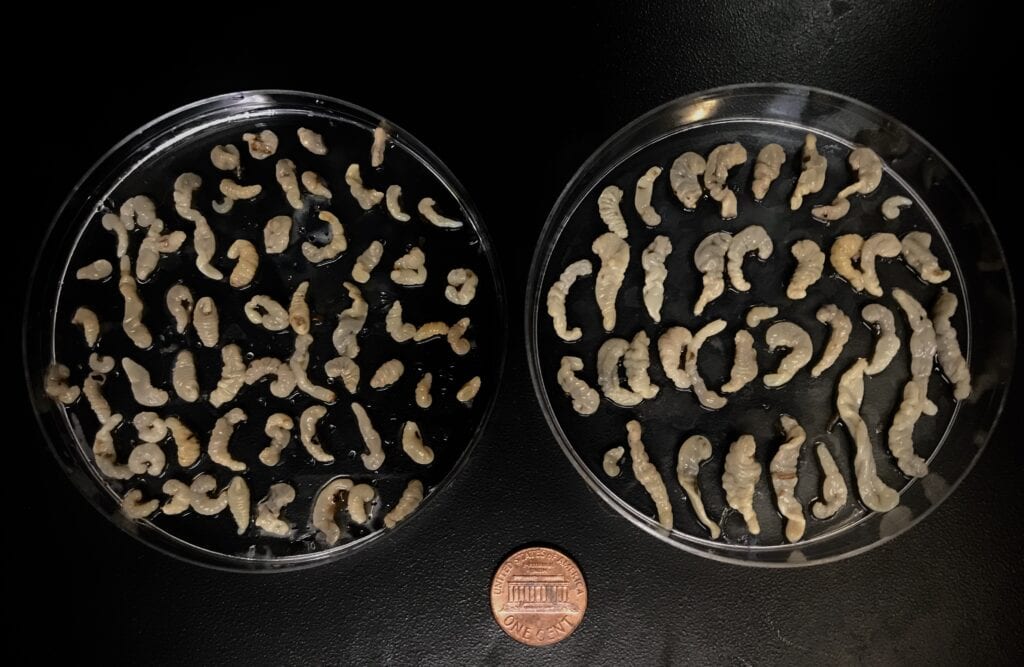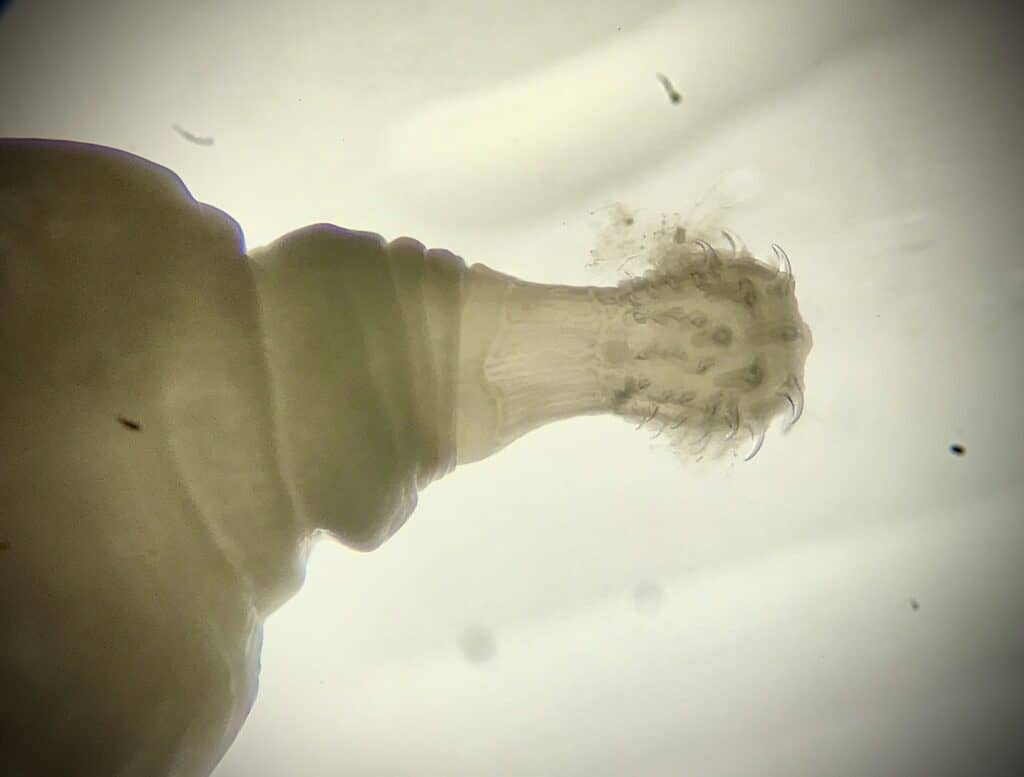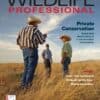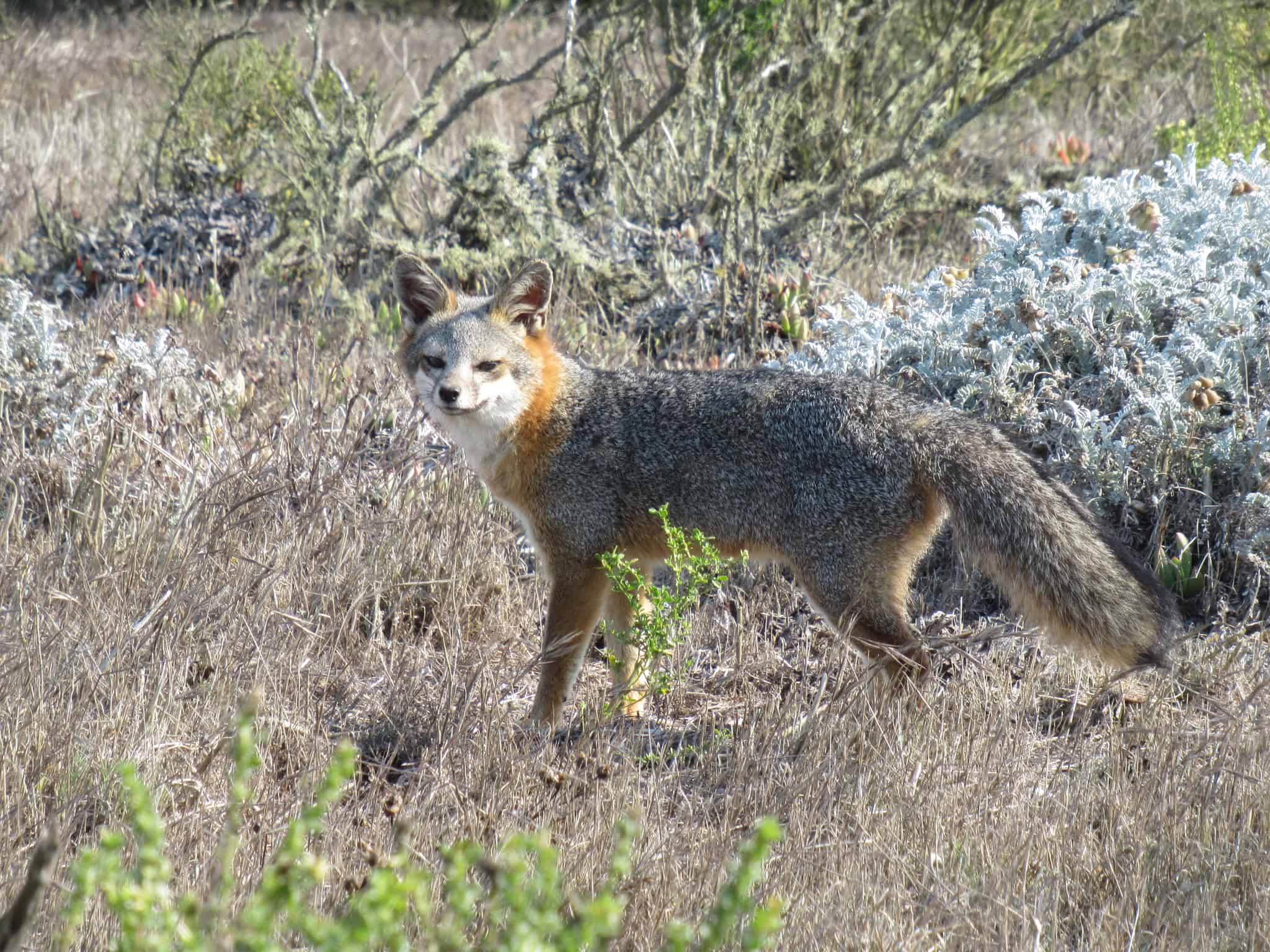Share this article
Wildlife Featured in this article
- San Miguel Island fox
- Wild pig
- Golden eagle
- Santa Rosa Island fox
- Mule deer
- Santa Cruz Island fox
- Santa Catalina Island fox
Hook-headed parasite may be killing island foxes
Intestinal worm could complicate recent recovery, especially during drought
A newly discovered parasite infecting San Miguel Island foxes in California may be putting pressure on a population that was recently delisted from the U.S. Endangered Species Act.
“It’s like the perfect storm,” said Oscar Alejandro Aleuy, a biology professor at Florida Atlantic University. “You have an island full of foxes, a severe drought and this new pathogenic parasite showing up. That might have caused the foxes to decline dramatically.”
San Miguel Island foxes (Urocyon littoralis littoralis) are endemic to their namesake island. The fox is one of several subspecies, each found on a different Channel Island off the coast of Los Angeles. The U.S. Fish and Wildlife Service delisted San Miguel Island foxes, along with Santa Rosa (U. l. santarosae) and Santa Cruz (U. l. santacruzae) Island foxes, in 2016 after populations significantly recovered following steep declines. The recovery resulted from the removal of predators like golden eagles (Aquila chrysaetos) and invasive species like wild pigs (Sus scrofa) and mule deer (Odocoileus hemionus) that made the environment unsuitable for foxes.
A new island parasite
In the early 2000s, scientists bred and released foxes back onto the island to boost their population. Following their release and in subsequent years, researchers closely monitored the fox population. They also conducted necropsies on dead foxes and monitored the health of live foxes.
Their surveys revealed that on San Miguel Island, the fox population peaked in 2012, before it dropped once again. They also found that the average fox’s body condition began to decline from 2013 to 2015—the same time that the population numbers dropped. At the time of the decline, not only was a drought occurring, but researchers also first discovered Pachysentis canicola parasites—a species only known from infecting mainland carnivores and never seen before on the Channel Islands—in the San Miguel Island fox in 2012. Alejandro Aleuy and his colleagues described these findings in a study published recently in the International Journal of Parasitology.

However, researchers don’t know much about the parasite, a species of thorny-headed worms (Acanthocephala) that lives in their hosts’ intestines. The first foxes that scientists found with the parasite were emaciated, and the worms’ heads, full of hooks, had punctured their intestines. A number of foxes that scientists necropsied or monitored after 2012 carried the parasite and had poor body condition and low weight.
These discoveries “raised alarms about this new parasite,” said Alejandro Aleuy, who was a postdoctoral researcher funded by the Morris Animal Foundation and working with researchers from both the University of Notre Dame and the University of California, Santa Barbara, at the time of research.
How did Pachysentis canicola get to the Channel Islands?
Alejandro Aleuy speculated that people may have accidentally imported infected arthropods during the captive breeding program for the foxes. There’s a small possibility that it had always been there but remained undetected until recently. “We can’t be 100% certain it’s invasive, but it’s very likely,” Alejandro Aleuy said.

So far, the parasite is only found on San Miguel Island and hasn’t jumped to any of the fox subspecies on the other Channel Islands—including the Santa Catalina Island fox (U. l. catalinae), which remains listed on the U.S. Endangered Species Act. But Alejandro Aleuy worries that the parasite might accidentally move to other islands as well.
Alejandro Aleuy and his colleagues also believe there are intermediate parasite hosts, but they aren’t yet sure which species they are. This knowledge will be important for understanding how the parasite completes its life cycle on the islands, he said.
To make matters more complicated, at the same time the parasite showed up, there was also a drought in the Channel Islands. The drought could have exacerbated the damage from the parasites since the foxes had weakened bodies and immune systems. This makes Alejandro Aleuy hesitant to blame the decrease in fox population solely on the worm.
“It’s very hard to disentangle the environment and the parasite from the population of foxes,” he said. “These are all underlying mechanisms that we need to research more in detail.”
When the rain returned to the island, the population of foxes began to rise again—but it didn’t quite reach its baseline numbers before the parasite was detected. Alejandro Aleuy said it’s possible that prior to population decreases in 2013, the fox had hit its carrying capacity on the island.
“The problem is that we don’t really know the carrying capacity of the island,” he said. But he hopes that continued monitoring and further research on the life cycle of Pachysentis canicola can help wildlife managers figure out what is going on with more certainty.
Header Image: San Miguel Island fox numbers may be affected by a parasitic worm. Credit: aurocyon








